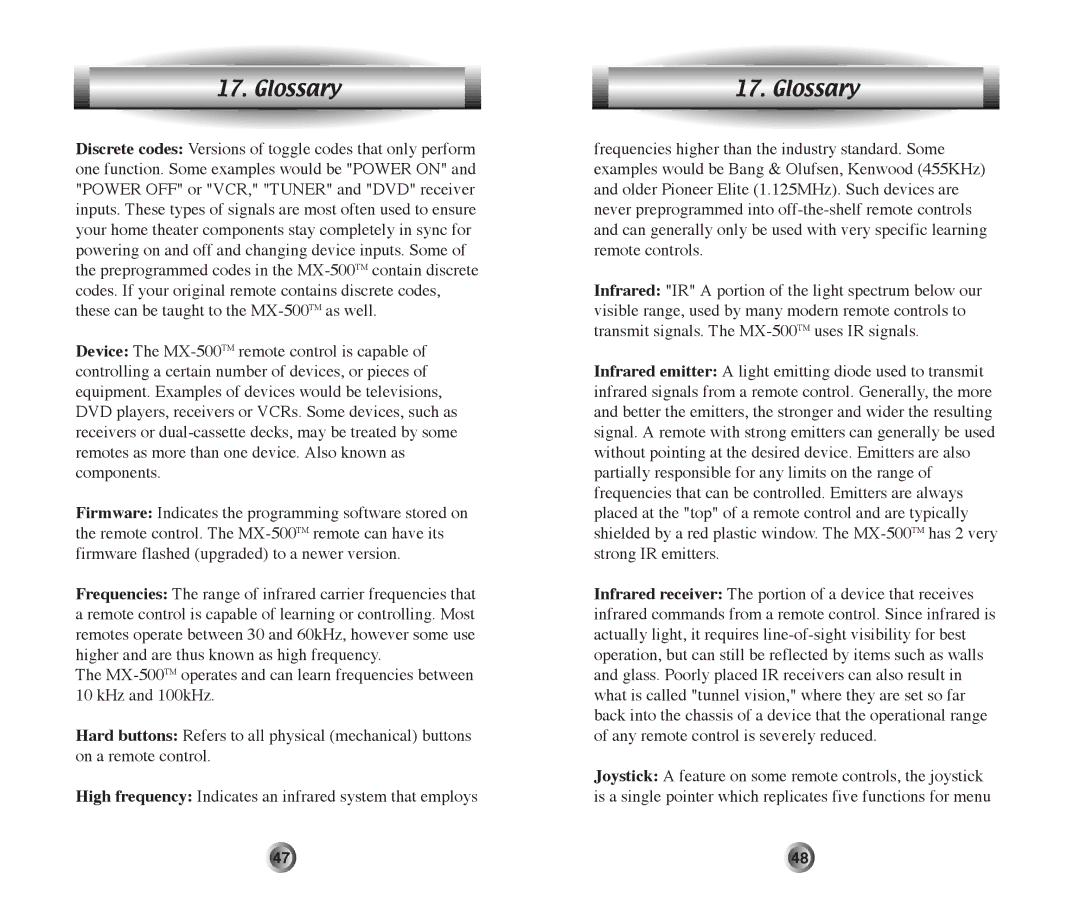
17. Glossary
Discrete codes: Versions of toggle codes that only perform one function. Some examples would be "POWER ON" and "POWER OFF" or "VCR," "TUNER" and "DVD" receiver inputs. These types of signals are most often used to ensure your home theater components stay completely in sync for powering on and off and changing device inputs. Some of the preprogrammed codes in the
Device: The
Firmware: Indicates the programming software stored on the remote control. The
Frequencies: The range of infrared carrier frequencies that a remote control is capable of learning or controlling. Most remotes operate between 30 and 60kHz, however some use higher and are thus known as high frequency.
The
Hard buttons: Refers to all physical (mechanical) buttons on a remote control.
High frequency: Indicates an infrared system that employs
17. Glossary
frequencies higher than the industry standard. Some examples would be Bang & Olufsen, Kenwood (455KHz) and older Pioneer Elite (1.125MHz). Such devices are never preprogrammed into
Infrared: "IR" A portion of the light spectrum below our visible range, used by many modern remote controls to transmit signals. The
Infrared emitter: A light emitting diode used to transmit infrared signals from a remote control. Generally, the more and better the emitters, the stronger and wider the resulting signal. A remote with strong emitters can generally be used without pointing at the desired device. Emitters are also partially responsible for any limits on the range of frequencies that can be controlled. Emitters are always placed at the "top" of a remote control and are typically shielded by a red plastic window. The
Infrared receiver: The portion of a device that receives infrared commands from a remote control. Since infrared is actually light, it requires
Joystick: A feature on some remote controls, the joystick is a single pointer which replicates five functions for menu
47 | 48 |
